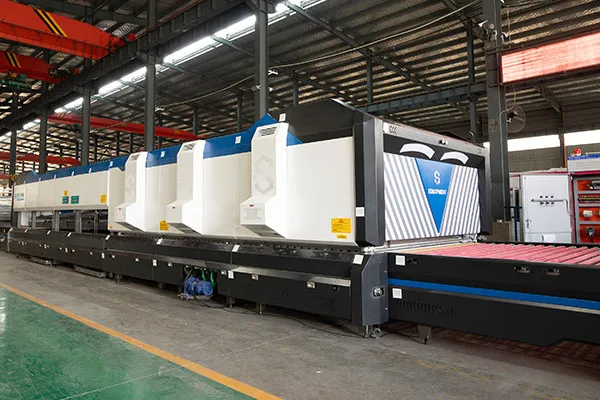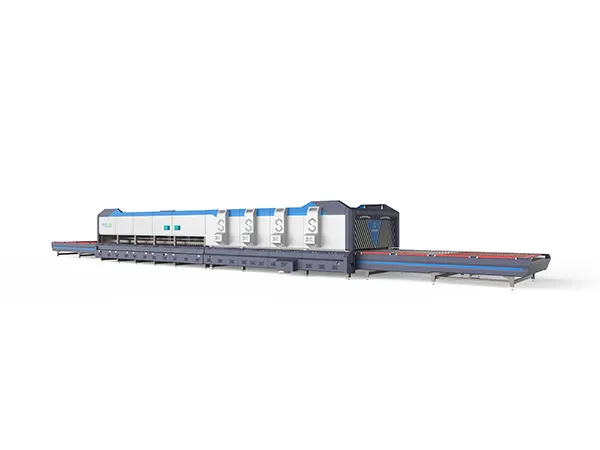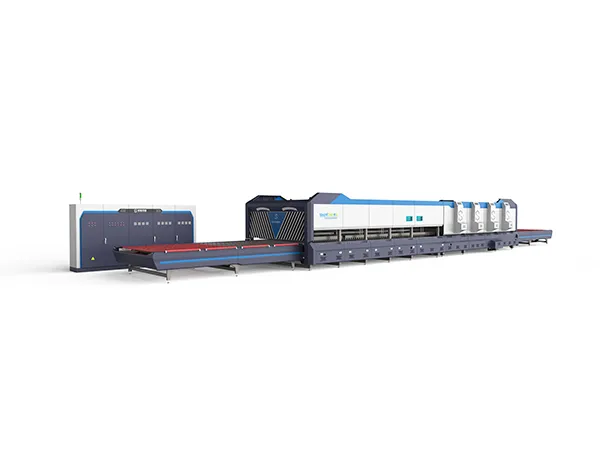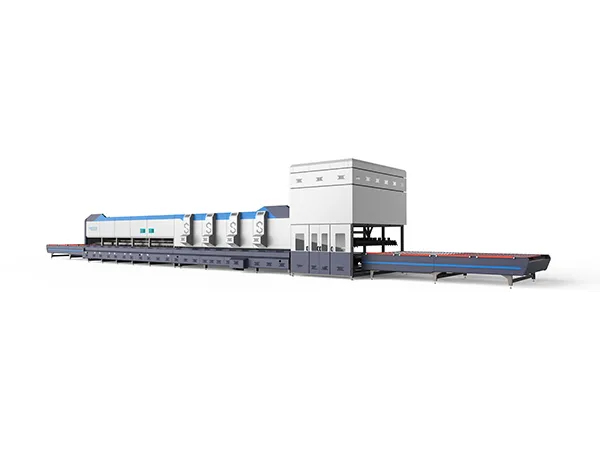A glass tempering furnace is a specialized machine used to strengthen glass by heating and rapid cooling, creating tempered glass that is more durable and safer than regular annealed glass. The process involves precise control of temperature and cooling to induce compressive stresses on the glass surface. Here's how it works:
1. Pre-Processing
Before entering the tempering furnace:
Cutting and Edging:
Glass sheets are cut to the desired size and edges are smoothed to prevent breakage during tempering.
Washing:
Glass is thoroughly cleaned to remove dirt and contaminants that might affect the heating and cooling process.
Inspection:
Glass is checked for defects like chips or cracks that could cause failure during tempering.
2. Heating Stage
Loading:
Glass sheets are loaded onto a conveyor system or rollers that transport them through the furnace.
Heating Chamber:
Glass is heated to a temperature of approximately 620–700°C (1148–1292°F), depending on the type and thickness of the glass.
Uniform Heating:
Electric or gas-fired heaters provide consistent and uniform heat.
Convection and/or radiant heating ensures the glass reaches its softening point without deforming.
Temperature Control:
Sensors monitor the glass temperature to avoid overheating or uneven heating.
3. Soaking Period
Thermal Equalization:
Glass is held at the target temperature for a short period to ensure the entire sheet is uniformly heated.
Proper soaking prevents stress imbalances during the cooling phase.
4. Rapid Cooling (Quenching)
Cooling System:
The heated glass exits the furnace into the quenching section, where high-velocity air jets cool it rapidly.
Air Nozzles:
Jets of cool air are blown onto both surfaces of the glass simultaneously.
Stress Induction:
The rapid cooling causes the outer surfaces of the glass to contract quickly, creating a layer of compressive stress.
The interior cools more slowly, resulting in tensile stress at the core.
Controlled Cooling:
The process is carefully controlled to avoid cracking or deformation.
5. Unloading and Inspection
Unloading:
The tempered glass is removed from the conveyor.
Inspection:
The glass is inspected for optical distortions, surface quality, and dimensions.
Marking:
If required, the tempered glass may be marked or labeled to certify it meets industry standards.
Key Characteristics of Tempered Glass
Strength:
Tempered glass is 4–5 times stronger than annealed glass of the same thickness.
Safety:
When broken, it shatters into small, blunt-edged fragments, reducing the risk of injury.
Thermal Resistance:
It withstands temperature fluctuations better than regular glass.
Applications
Automotive windows
Architectural glazing (doors, windows, facades)
Furniture (tabletops, shelves)
Appliances (oven doors, refrigerator shelves)
By combining precise heating, soaking, and rapid cooling, a glass tempering furnace produces durable and safe tempered glass suitable for various applications.







